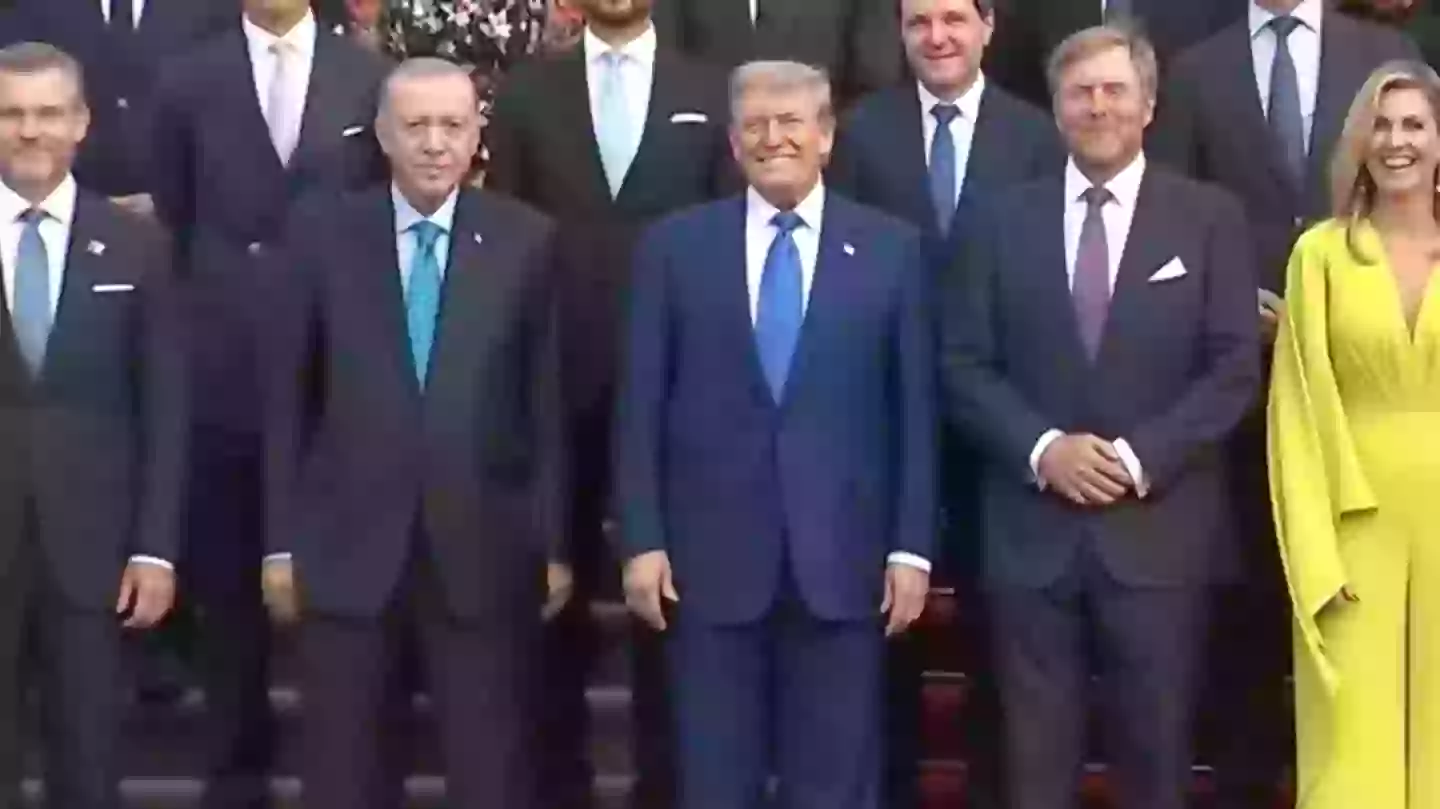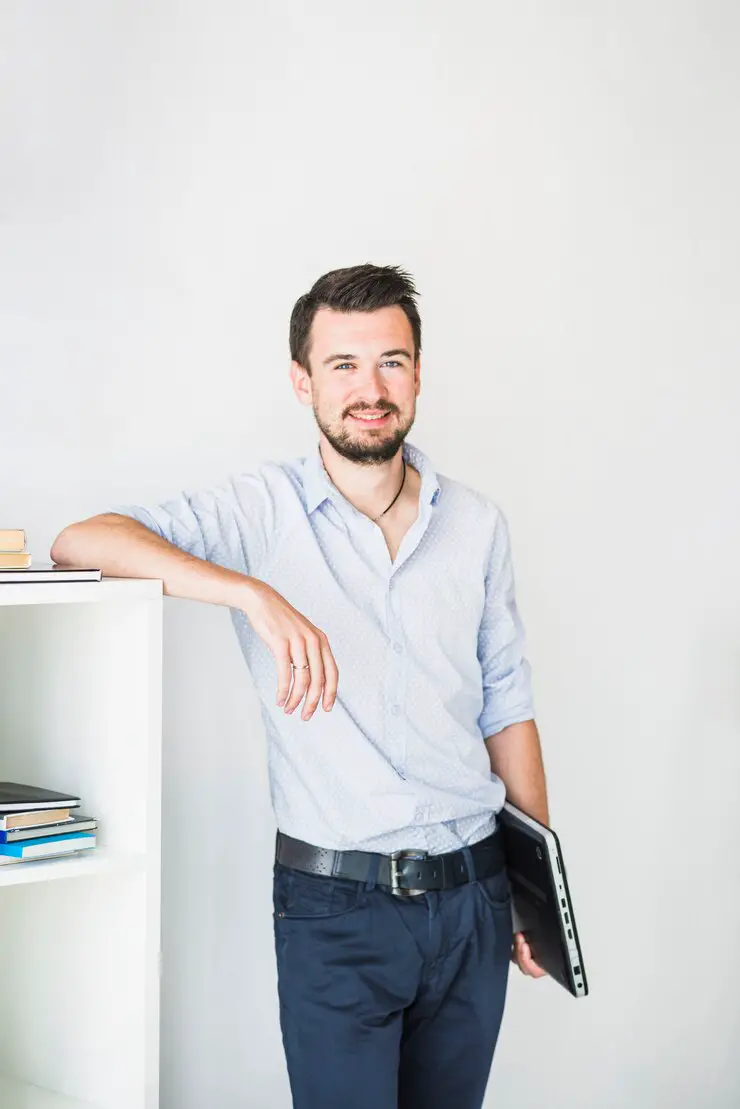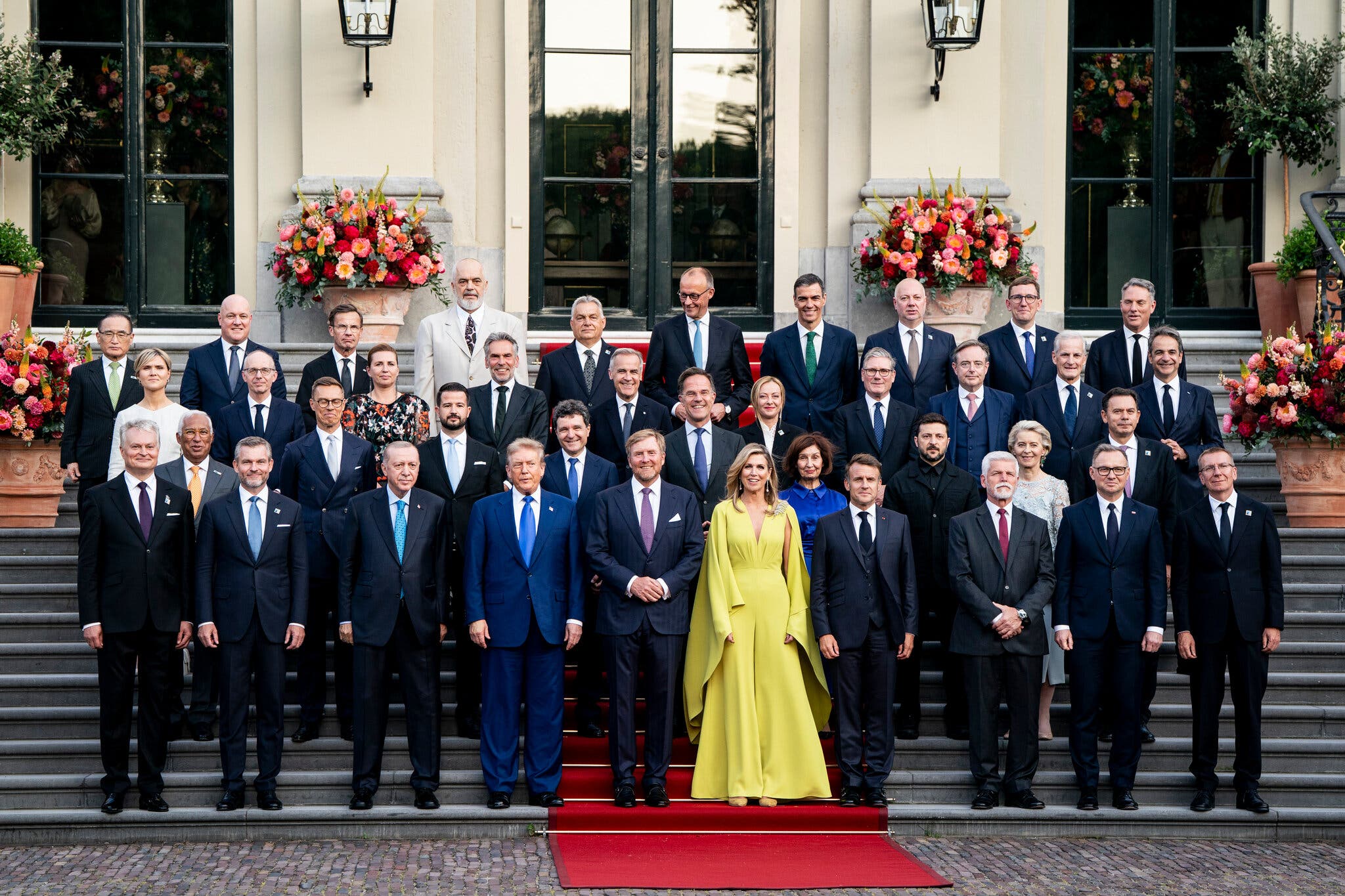Social Media Speculation Surrounds Trump’s NATO Summit Appearance
Online observers question physical details in official group photograph from The Hague diplomatic gathering
President Donald Trump’s participation in the recent NATO summit in The Hague has generated unexpected social media attention, not for diplomatic developments or policy discussions, but for conspiracy theories regarding his physical appearance in official photographs from the event.

The speculation centers on a formal group photograph taken during the summit on June 24th, featuring Trump alongside other world leaders, King Willem-Alexander and Queen Maxima of the Netherlands. Social media users have scrutinized the image, with some questioning whether the president appeared shorter than usual, leading to unfounded theories about the use of a body double.
The NATO Summit Context
The NATO summit in The Hague brought together leaders from the alliance’s 32 member nations for discussions on defense spending, regional security challenges, and coordinated responses to global threats. The formal gathering included traditional diplomatic protocols, including an official group photograph with the Dutch royal family.

Such summits typically feature carefully orchestrated photo opportunities designed to demonstrate unity among allied nations. The group photograph in question was taken before a formal dinner, following established diplomatic protocols for international gatherings of this magnitude.
The image shows President Trump positioned among his international counterparts, including notably tall figures such as King Willem-Alexander of the Netherlands, who stands 6 feet 5 inches tall, and other European leaders known for their above-average height.
Origins of the Speculation
The conspiracy theory began when a social media user on X (formerly Twitter) posted observations about Trump’s apparent height in the photograph, suggesting he appeared shorter than in previous public appearances. The post gained traction as other users began sharing similar observations and theories.
“POTUS sends ‘mini-TRUMP’ to The Hague to meet ‘suited’ Zelenskyy & friends,” wrote the original poster, referring to Ukrainian President Volodymyr Zelenskyy, who was also present at the summit.
The post quickly attracted responses from users who claimed to see evidence supporting the body double theory, with some pointing to perceived differences in facial expressions, posture, and overall appearance compared to previous public appearances.
Historical Context of Body Double Conspiracies
This is not the first time members of the Trump family have been subject to body double conspiracy theories. Melania Trump has been the subject of similar speculation for several years, with some social media users claiming that an actress or stand-in has been used for certain public appearances.
These theories about the former First Lady typically cite factors such as:
- The use of large sunglasses during public appearances
- Perceived changes in facial features or body language
- Speculation about her willingness to participate in public events
- Claims about security concerns requiring the use of doubles
Body double conspiracy theories have historically been applied to various political figures and celebrities, often emerging during periods of intense public scrutiny or when individuals appear different from previous public appearances due to factors such as lighting, camera angles, or natural changes in appearance.
Expert Perspectives on Visual Perception
Photography and visual perception experts note that numerous factors can affect how individuals appear in photographs, particularly in formal group settings with multiple subjects of varying heights.
Camera positioning, lens selection, and the relative heights of surrounding individuals can significantly impact how a person appears in group photographs. Wide-angle lenses, commonly used for large group shots, can create distortion effects that make individuals appear shorter or taller depending on their position relative to the camera’s focal point.
Additionally, formal diplomatic photographs often involve specific positioning protocols that may place individuals in arrangements that don’t reflect their natural height relationships. Considerations such as diplomatic rank, alphabetical order, or visual composition for the photograph can influence where individuals stand in relation to one another.
The Role of Social Media in Conspiracy Proliferation
The rapid spread of this particular conspiracy theory illustrates how social media platforms can amplify speculation and transform casual observations into widespread theories. The visual nature of the evidence—a photograph that users can examine and interpret—provides what appears to be concrete evidence to support various claims.
Social media algorithms often promote engaging content, and conspiracy theories frequently generate high levels of engagement through comments, shares, and reactions. This can create an echo chamber effect where users primarily encounter information that reinforces their existing beliefs or suspicions.
The phenomenon also demonstrates how political polarization can influence the interpretation of visual information. Supporters and critics of political figures may view the same image through different lenses, leading to vastly different conclusions about what they observe.
Rational Explanations for Height Discrepancies
Several logical factors could explain any apparent height differences in the NATO summit photograph:
Relative Height Comparison: King Willem-Alexander of the Netherlands is notably tall at 6’5″, which would make most individuals appear shorter when standing directly beside him. Other European leaders present at the summit are also known to be above average height.
Footwear and Posture: Diplomatic events often involve extended periods of standing, which can affect posture. Additionally, different types of formal footwear can impact apparent height in photographs.
Camera Angles and Positioning: The photographer’s position, lens choice, and the arrangement of subjects can create optical illusions that make individuals appear different from their actual proportions.
Natural Aging: Over time, individuals may experience slight changes in posture or apparent height due to natural aging processes.
Counter-Arguments and Skeptical Responses
Not all social media users embraced the body double theory. Many responded with skeptical analysis and alternative explanations for the observations that sparked the speculation.
“I think he just looks short here because the King of the Netherlands is 6’5. Let’s not get carried away,” wrote one user, attempting to provide rational context for the height discrepancy.
Others pointed out that Trump was “standing next to tall dudes,” noting that the visual comparison was likely skewed by the presence of particularly tall world leaders in the photograph.
Some users emphasized the importance of critical thinking when evaluating visual evidence, noting that extraordinary claims require extraordinary evidence, and that simple explanations are often more likely than complex conspiracy theories.
Media Literacy and Critical Analysis
The episode highlights the importance of media literacy in the digital age, particularly when evaluating visual evidence shared on social media platforms. Several factors should be considered when analyzing photographs for evidence of unusual or suspicious activity:
Source Verification: Determining the origin and authenticity of images before drawing conclusions about their content.
Context Understanding: Considering the circumstances under which photographs were taken, including technical factors that might affect appearance.
Alternative Explanations: Exploring rational explanations before accepting extraordinary claims about what images might show.
Expert Opinion: Consulting photography professionals or other relevant experts when technical questions arise about image interpretation.
The Broader Implications
While conspiracy theories about body doubles may seem harmless, they can contribute to broader patterns of misinformation and distrust in official information sources. When applied to political figures, such theories can undermine confidence in democratic institutions and legitimate governance.
The phenomenon also reflects broader challenges facing modern democratic societies in distinguishing between legitimate scrutiny of public officials and unfounded speculation that can distract from substantive policy discussions and diplomatic achievements.
Conclusion
The body double conspiracy theory surrounding President Trump’s NATO summit appearance illustrates how social media can transform casual observations into widespread speculation. While the theories lack credible evidence and can be explained by conventional factors such as camera angles and the relative heights of other world leaders, they demonstrate the power of visual media to generate engagement and discussion.
The episode serves as a reminder of the importance of critical thinking and media literacy in evaluating information shared on social media platforms. As digital communication continues to play an increasingly important role in public discourse, the ability to distinguish between credible information and unfounded speculation becomes ever more crucial.
Rather than focusing on conspiracy theories about physical appearance, public attention might be better directed toward the substantive diplomatic and policy outcomes of international summits such as the NATO gathering in The Hague. These events address critical issues of international security and cooperation that have far-reaching implications for global stability and prosperity.
The prevalence of such theories also underscores the need for improved digital literacy education and critical thinking skills in navigating an increasingly complex information environment where appearance and reality can be easily confused or deliberately distorted.

Ethan Blake is a skilled Creative Content Specialist with a talent for crafting engaging and thought-provoking narratives. With a strong background in storytelling and digital content creation, Ethan brings a unique perspective to his role at TheArchivists, where he curates and produces captivating content for a global audience.
Ethan holds a degree in Communications from Zurich University, where he developed his expertise in storytelling, media strategy, and audience engagement. Known for his ability to blend creativity with analytical precision, he excels at creating content that not only entertains but also connects deeply with readers.
At TheArchivists, Ethan specializes in uncovering compelling stories that reflect a wide range of human experiences. His work is celebrated for its authenticity, creativity, and ability to spark meaningful conversations, earning him recognition among peers and readers alike.
Passionate about the art of storytelling, Ethan enjoys exploring themes of culture, history, and personal growth, aiming to inspire and inform with every piece he creates. Dedicated to making a lasting impact, Ethan continues to push boundaries in the ever-evolving world of digital content.
